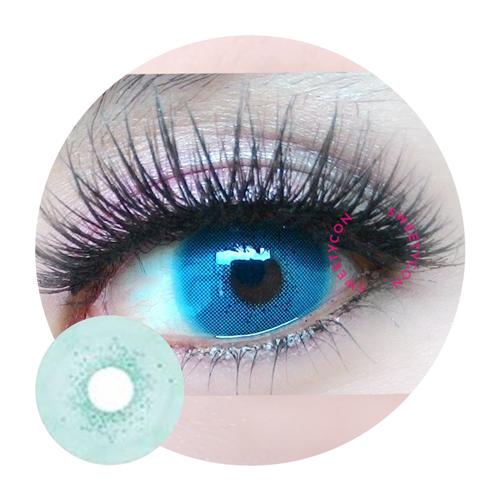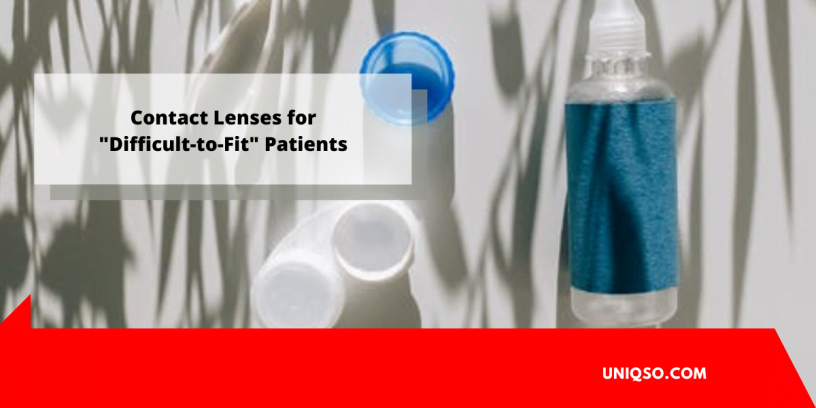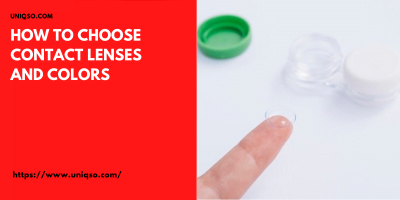Patients frequently report having difficulties using contact lenses for a variety of reasons. Some people are deemed “hard to fit” as contact lens wearers due to particular eye shape, specific illnesses or disabilities, or the aftermath of surgery.
However, for difficult-to-fit individuals who prefer to wear contact lenses, there are solutions that can enable comfortable and successful contact lens usage. This would necessitate a specialist fitting with an eye doctor who is an expert in your condition and the many products available in order to determine the best match for your individual situation. If you have one of the following problems, you may be considered a difficult-to-fit contact lens candidate:
- Astigmatism
- Keratoconus
- Post-LASIK or other refractive surgery
- Corneal Scarring
- Dry Eyes
- Giant Papillary Conjunctivitis (GPC)
- Pellucid Marginal Degeneration
- Presbyopia (reduced near vision common in individuals aged 40 and over).

Astigmatism Toric Lenses
Astigmatism is a disorder that causes fuzzy vision (in some instances double vision) because the front of the eye (the cornea) has two curves rather than one, resulting in two focal points instead of one. This makes ordinary contact lenses difficult to fit and necessitates the use of specialty contact lenses such as toric lenses or stiff gas permeable lenses (RGPs).
Toric contact lenses are custom-made to fit the patient’s eye and are meant to correct astigmatism. Most are constructed of soft materials that are meant to stay in position on the eye, but in rare circumstances, where the rotation of the lens (due to blinking and eye movement) cannot be halted, gas permeable lenses may be used. Because these lenses require more personalization and a more sophisticated fitting process, they are more costly and take longer to create in the contact lens laboratory than regular lenses.
Post-LASIK or Vision Correction (Refractive) Surgery
While LASIK surgery has a very high success rate, visual problems and discomfort can occasionally persist. Night vision following LASIK, in particular, can occasionally cause glare or halos around lights. RGPs are frequently beneficial in alleviating these adverse effects and restoring clear vision.
Giant Papillary Conjunctivitis (GPC) and Contact Lenses
GPC is a kind of conjunctivitis in which the inside of the eyelid swells. A buildup of protein deposits on contact lenses can cause or aggravate the illness. Your eye doctor may advise you to use daily disposable lenses or RGP lenses (which are not water-based and so do not accumulate protein). Your doctor may also advise you to use medicinal eye drops and refrain from wearing contact lenses until your symptoms improve.
Dry Eyes and Contact Lenses
Your eyes will feel dry, gritty, burning, red, and irritated if you have Dry Eye Syndrome. Blurred vision is another symptom of Dry Eye Syndrome. These symptoms are frequently exacerbated by the usage of contacts. In reality, many people who do not ordinarily have chronic dry eyes will feel some of these symptoms as a result of using contact lenses.
First and foremost, if you have chronic dry eyes, you should consult an eye doctor for treatment and relief before considering contact lenses. Once your dry eyes have been treated, it is safe to attempt contacts, and there are several alternatives to explore.
Many kinds of soft contacts, as well as treatments like disinfection and washing solutions, are developed with components that are intended to be more pleasant for those who have dry eyes. Some of these brands and items might be recommended by your eye doctor. Gas permeable (GP) or rigid gas permeable (RGP) lenses, on the other hand, are constructed of a firm material that, unlike soft lenses, does not dry out and can store a certain amount of moisture behind the lens to protect the eye from drying out. Gas permeable lenses are an excellent choice that may be extremely comfortable for people who suffer from dry eyes.
Furthermore, your doctor may advise you to follow a certain wearing schedule, such as restricting the amount of time you wear your contacts during the day or replacing your contacts on a more frequent basis.
Rigid Gas Permeable (RGP) or Gas Permeable (GP) Lenses
Rigid Gas Permeable (RGP) lenses, also known as Gas Permeable (GP) lenses, are useful for many difficult-to-fit individuals. The hard, oxygen-permeable material allows the eye to breathe and dramatically minimizes the risk of infection caused by protein deposits on soft lenses, which tend to host germs. RGPs also retain moisture behind the lens, preventing eyes from drying out.
Rigid Gas Permeable (RGP) Lenses for Keratoconus
Keratoconus is a disorder that causes the cornea to thin and protrude forward into a cone shape. Traditional contact lenses may cause pain in these individuals, and their vision may still be hazy, hence RGPs are frequently utilized for treatment of mild, moderate, and severe instances. In rare circumstances, rigid gas permeable lenses may assist to prevent the cone shape from deteriorating. Furthermore, RGPs can help with keratoconus vision correction, which is sometimes not achievable with soft contacts or even eyeglasses.
Bifocal and Multifocal Contact Lenses for Presbyopia
Presbyopia is a frequent disorder that affects adults over the age of 40 and impairs their ability to focus on close objects. Many individuals keep a pair of bifocal or multifocal glasses on hand for reading menus, newspapers, books, and other items that need close vision. For those that prefer contact lenses over eyeglasses, bifocal and multifocal contact lenses are an option.
Monovision is an option for certain people who have presbyopia and also require correction for distant vision. Monovision is a contact lens fitting procedure in which you wear a contact lens in one eye for distant vision and another in the other eye for near vision. Multifocal contact lenses are another possibility. Both eyes are normally fitted for distant vision and both eyes are utilized for close vision at the same time during this contact lens fitting process. It normally takes approximately a week for the brain and eyes to acclimate to both contact lens fitting choices.
If you have one of these problems or find it difficult to use contact lenses for another reason, consult your eye doctor. As technology advances, more and more choices for hard-to-fit contact lens patients to benefit from the comfort and convenience of contact lens use become available.
For more information about lightest blue contacts, please visit https://www.uniqso.com

